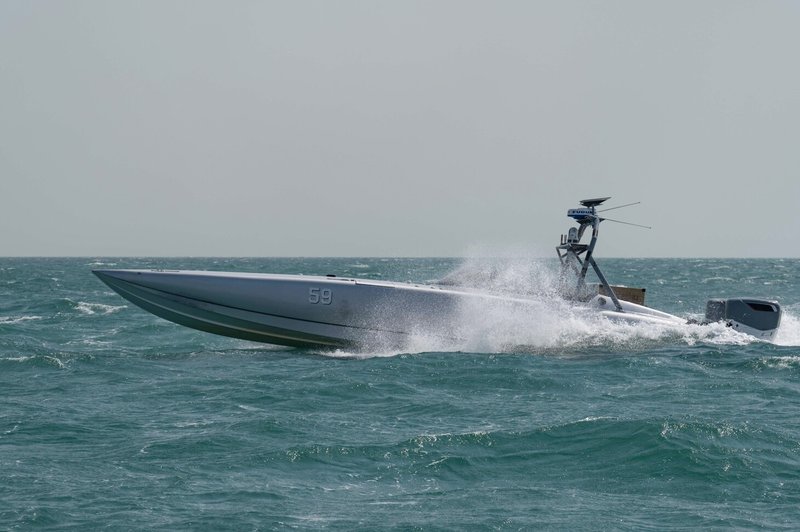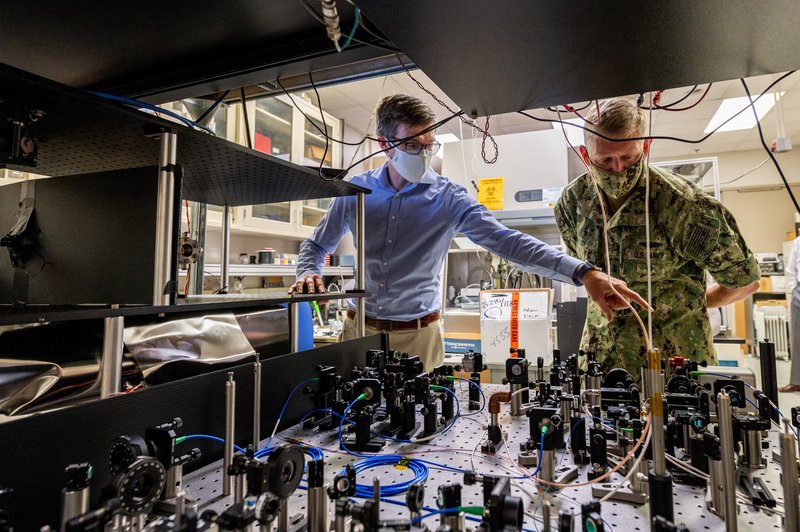Waiting for the next big thing – tracking naval innovation
Up until a few years ago, naval trade shows seemed filled with innovation. Today, they sometimes feel like more of the same… just different variants. Is naval creative thinking experiencing a hiatus until the next (r)evolution comes along, or are we just not looking hard enough?
When I started writing about navies ten years ago, every time I got ready to attend a trade show, I was filled with anticipation. What new technologies or platform designs would be revealed or showcased? The feeling of discovery might have been partly due to my being new to the field, but there was definitely more to it... Continues below
Newsletter Sponsor:

Above: The uncrewed revolution is here, but CONOPS and doctrines still need to be established and matured. (Photo: USN)
In the 2010s, it seemed, the world was finally recognising that after decades of humanitarian assistance/disaster relief (HA/DR) and counter-terrorism, the 21st century would experience a shift. It would witness the resurgence of great power competition, and much of this competition would happen at sea – because of the resources it contains, and because of the geostrategic opportunities it represents.
As a result of this, navies embarked on important procurement programmes to replace much of their ageing fleets. But with money still tight and demographics restricting crewing, industry was forced to innovate, dreaming up modular designs, more powerful systems with more bang for the buck, quieter submarines, etc.
Then uncrewed systems became the centre of attention – aerial, surface, underwater – and then… well, that was it. Naval systems now have greater visibility at multi-domain trade shows, but most seem populated by drones.
Has the naval innovation streak come to a halt after nearly ten years of sometimes significant evolutions? Or are we too focused on the tangible, thus missing smaller breakthroughs elsewhere?
The answer likely lies somewhere in the middle. Yes, most significant naval procurement programmes are now well under way. Yes, uncrewed systems are now everywhere. And yes, revolutions that bring transformational change to a field do not come around that often.
But we are not done. The difference is now that the devil is in the details, and these are mainly intangible.
Because with all these new platforms, the concepts of operations and doctrines are still being shaped, and they are informing the technologies powering those vessels and systems.
For instance, a lot is expected of uncrewed systems, but significant challenges remain to turn UxVs into the game changers navies want them to be. Innovation will now come from the type of artificial intelligence (AI) and machine learning (ML) that are used to power their autonomy.
Can true autonomy really be achieved? Up to what sea state? How transparent and explainable is the AI powering them, and do sailors and commanders trust AI-powered systems?

Above: Navies such as the USN are now actively working on quantum technologies. Could these unlock the next (r)evolutionary stage of development? (Photo: USN)
Quantum technologies are also emerging slowly but surely. As intangible as they can be, these will bring critical advances in cyber security – encrypting and decyphering – and detection by radars and perhaps even sonars.
Similarly, navigation in GNSS-denied areas is likely to bring a few surprises, too, primarily because the physics of navigating in specific environments – eg underwater – or the CONOPS and training for doing so with multiple assets unable to communicate will drive the need to innovate.
To find the next naval innovation, one essentially has to find the next challenge engineers face. Through the years, I have discovered anticipation in waiting for the answer to the question: ‘What is the next challenge?’ Because necessity, as we all know, is the mother of invention, and much still needs to be explored and tamed in the naval world.
So, no, dull days are not ahead of us. We just need to keep an eye on the details.
Other articles in this newsletter:
How many ship classes is enough? Pursuing the holy grail of the ‘balanced fleet’
Arctic ambitions – why the West should keep a close eye on Chinese activity
Don't want to miss out on future Decisive Edge content? Make sure you are signed up to our email newsletters.











